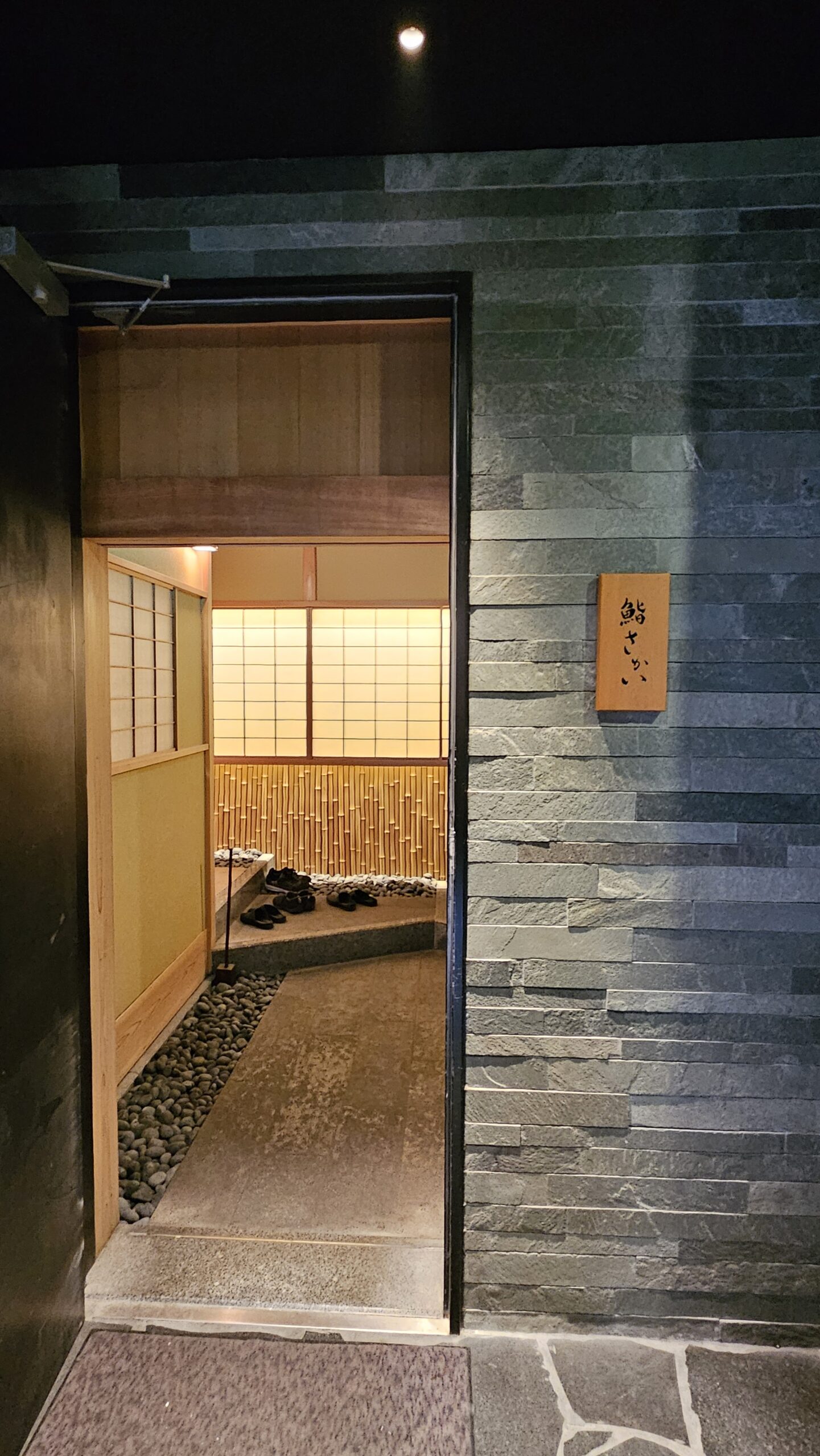
Dinner at Sushi Sakai in Fukuoka, Japan
This is a late post about my dinner in Sushi Sakai in Fukuoka that took place in April 2024, and just a day after my time at Tenzushi.
Compared to Tenzushi, Sushi Sakai serves Edo-mae sushi, which is the more traditional style of sushi with very minimal toppings on top of the neta of the sushi compared to Tenzushi’s Kyushu-mae which typically adds other fresh ingredients to make for interesting flavor combos.
Sushi Sakai has constantly been placed at Top 10 sushi restaurants in Japan with numerous Tabelog Gold awards. The ease-of-access when it comes to reservation for foreigners makes it one of my favorite sushi places in Japan that I can wholeheartedly recommend. Tourists that come to Japan looking for high-end sushi experience should have Fukuoka on their radar which tend to have less competition compared to Tokyo and Osaka.
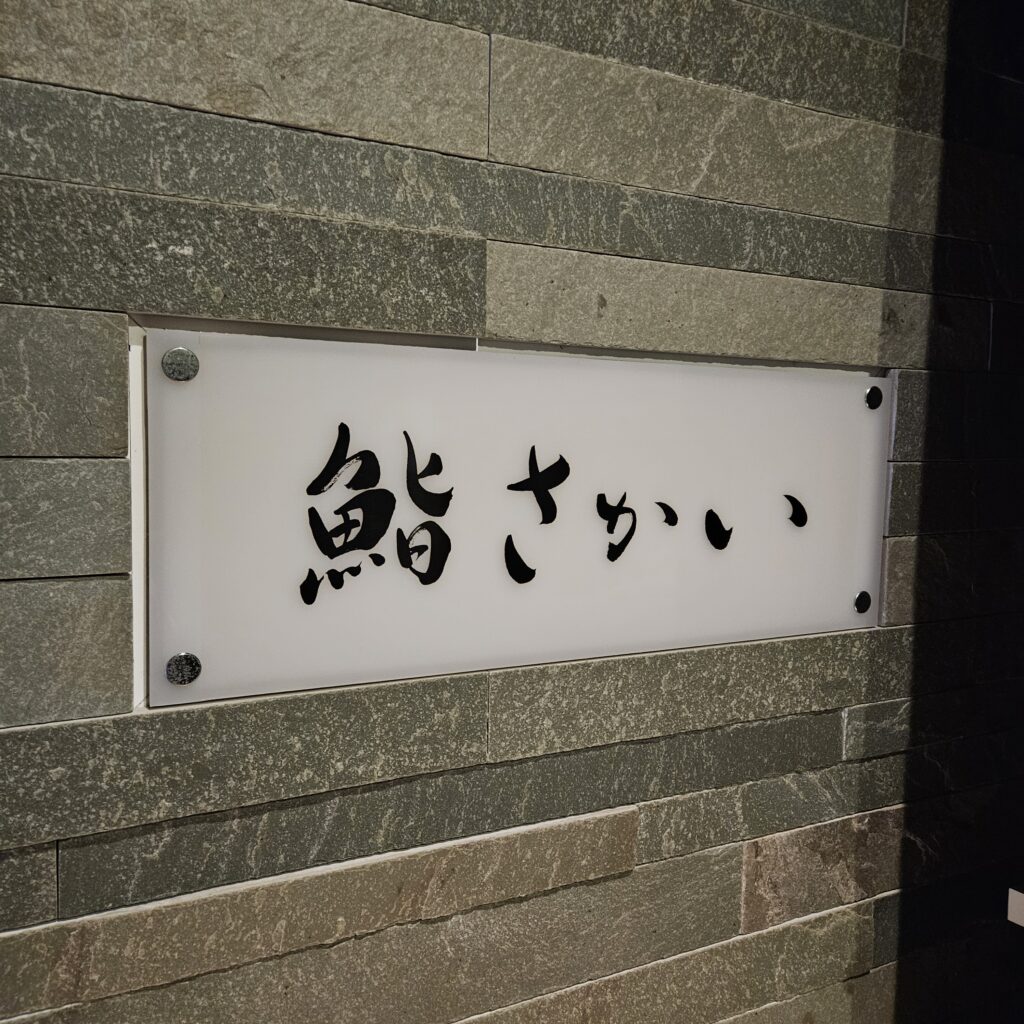
How to Book A Reservation at Sushi Sakai
The best way to book a reservation at Sushi Sakai is through Tablecheck. Keep in mind that there are three branches within the building Sushi Sakai is in.
Make sure that you are booking Sushi Sakai with the price of 44,000 Yen (or the one that charges the highest price), which is served by the Head Chef, Daigo Sakai.
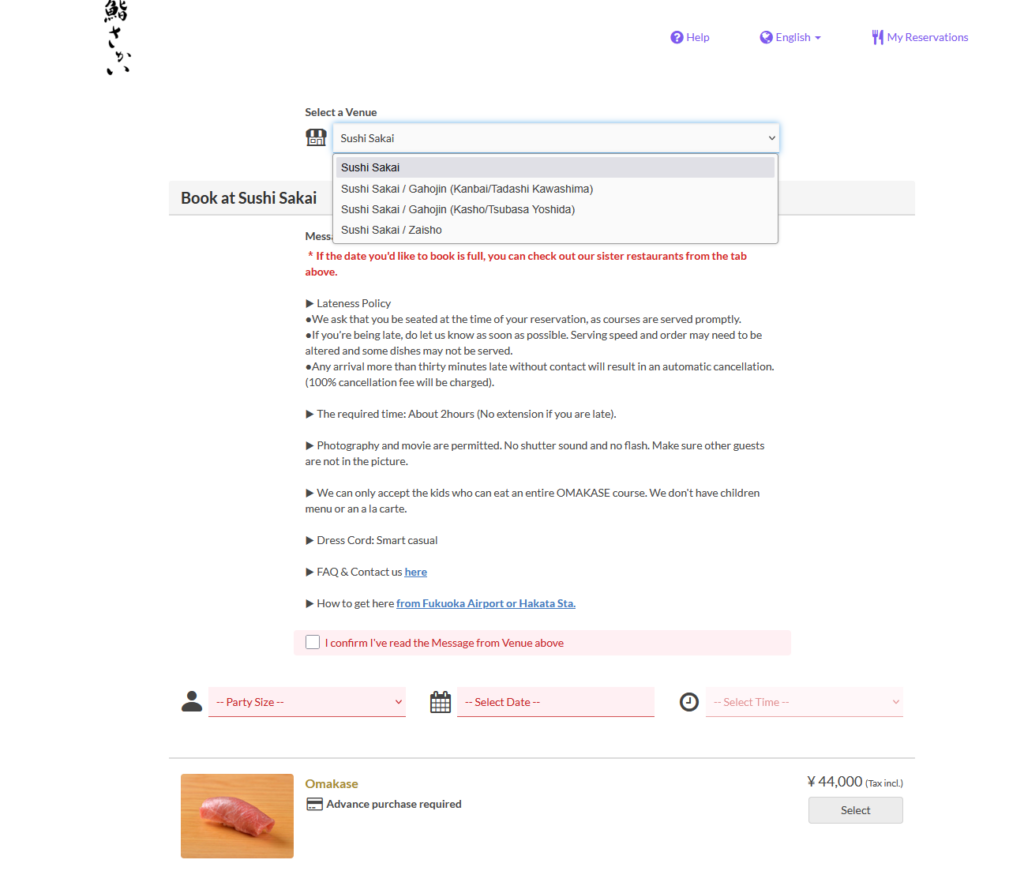
Other branches like Gahojin and the newer Zaisho are served by Sakai-san’s most trusted apprentices albeit at lower prices; 33,000 yen for Gahojin & 22,000 yen for Zaisho. I haven’t tried either, but they both seem to be well-reviewed with both earning above a 4 star on Tabelog which is quite a feat, and Gahojin earned Tabelog Broze awards in the past years. I can expect either restaurants to have similar style.
Both could make for alternatives in case you cannot reserve Sushi Sakai, but the main restaurant should be doable if you check the availability schedule a few months in advance. The difficulty is also lessened due to the fact that Sushi Sakai holds 12 seats at the counter table which pretty much doubles most of high-end sushi restaurants’ seat counts.
Food & Drinks
To summarize, I had 11 nigiri pieces, 4 maki rolls, and 9 otsumami in Sushi Sakai, so there’s tons of food to be had here. Not only that, but Sushi Sakai has extensive drinks menu, and is possibly one of the more impressive ones even for high-end sushi places in Japan.
There are two sommeliers, and they may speak fluent English too to better assist non-Japanese speakers like myself. One of them used to work in Conrad Tokyo as a sommelier as well.
I do not drink alcohol, but I was intrigued by their premium tea selection, especially the Royal Blue Tea lineups. I was made aware of that brand when I flew JAL First Class, which I downed 7-8 glass of the Queen of Blue tea in a single flight.
So, the first one I tried was Hana, which is a jasmine tea with pleasant flowery smell. Out of all the teas I tried here, I enjoyed this one the most. Though, I am biased towards jasmine tea in general.
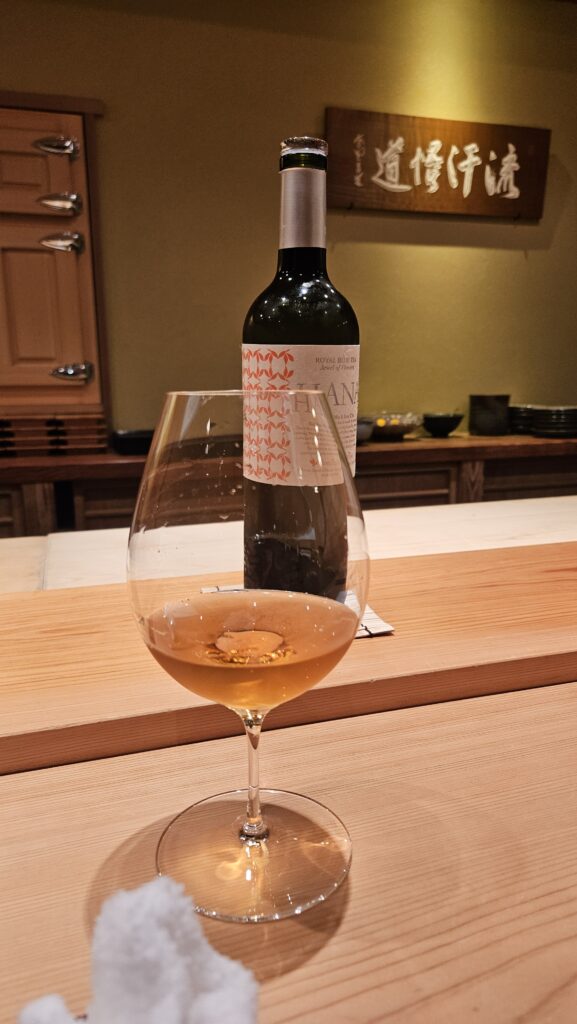
Shortly after, the first otsumami came. Firefly squids with bamboo shoots.
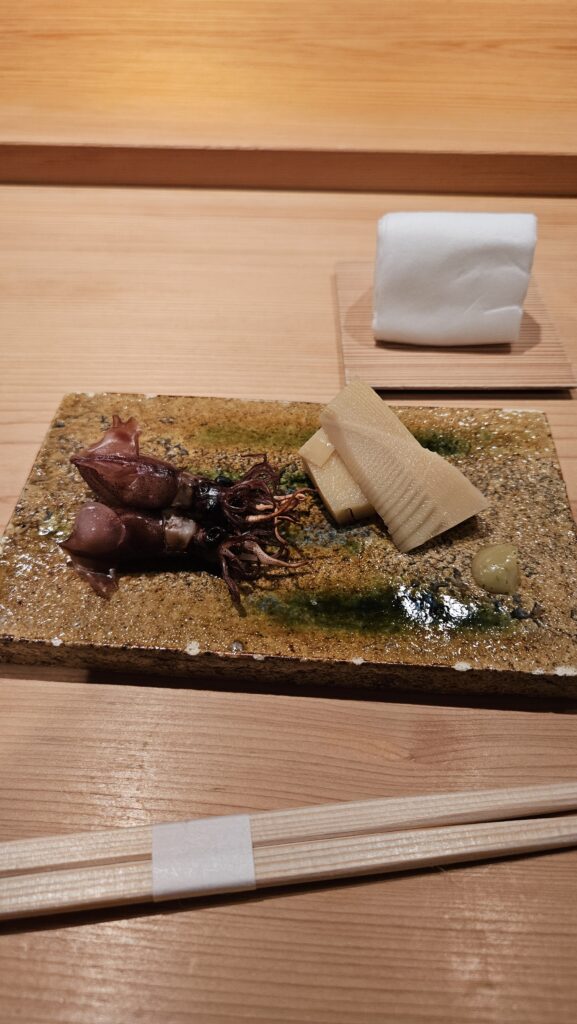
Then, the meticulously-cut octopus and few abalone pieces.
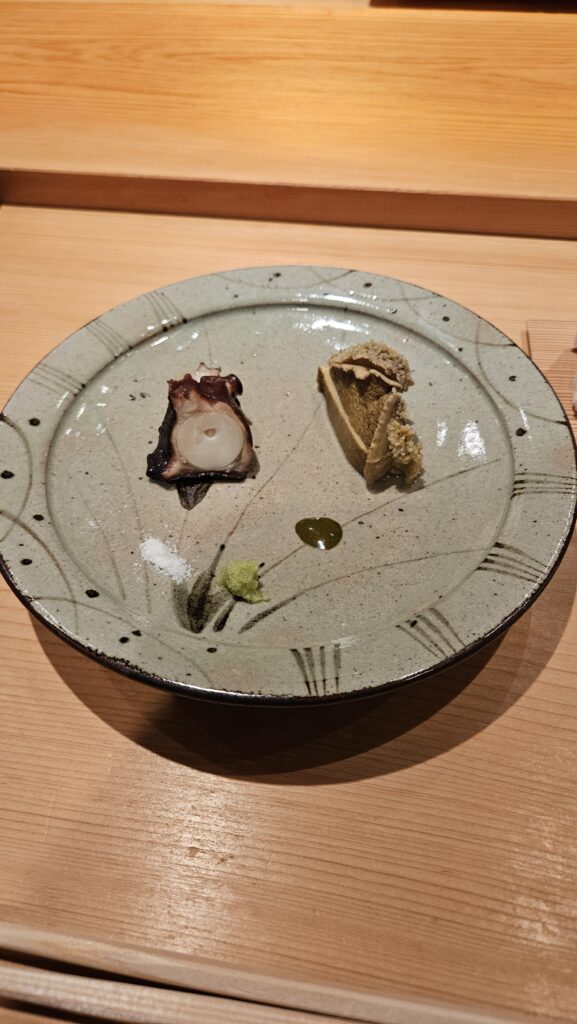
Then, some sort of fish dipped with creamy sauce. Beautiful presentation with the edible flowers and simply delicious.
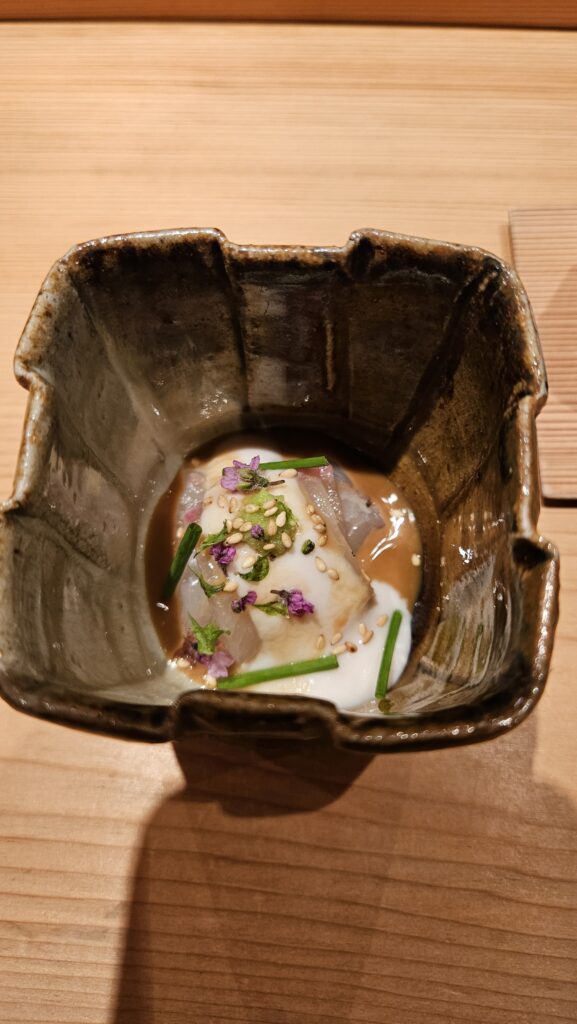
After that, finally comes the first nigiri piece: negitoro or minced tuna.
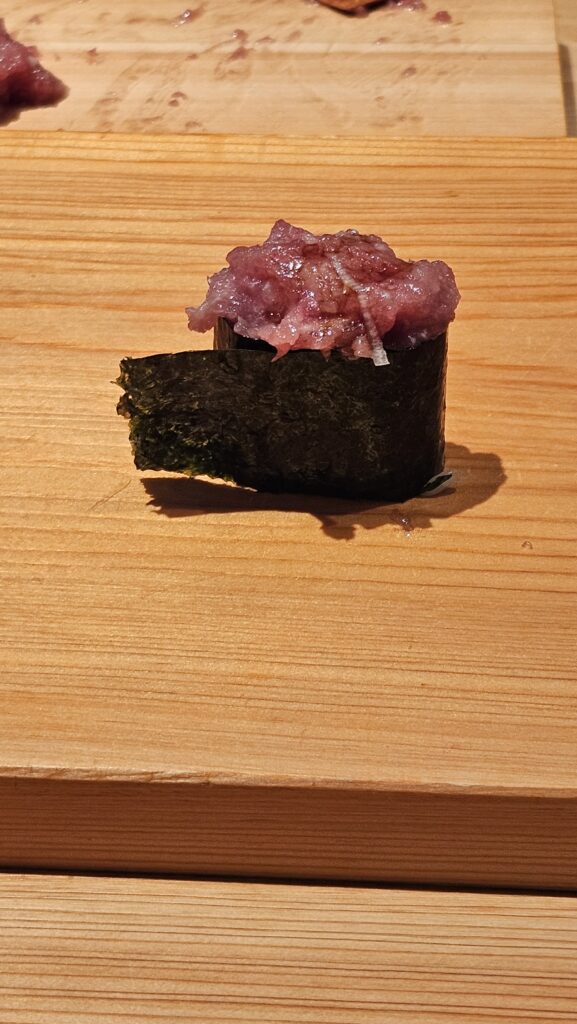
Then back to more appetizers with uni and grilled tilefish for the next two.
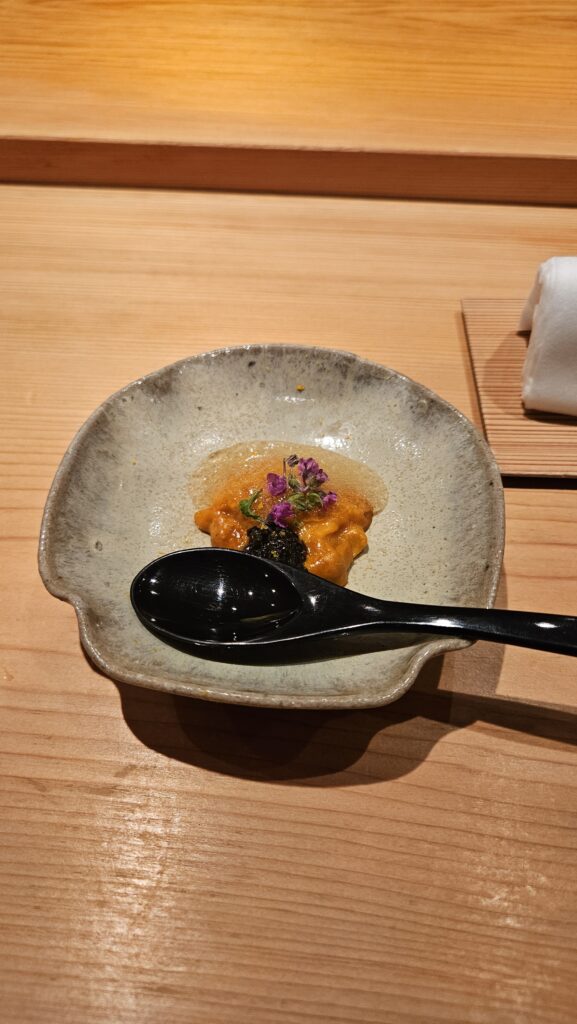
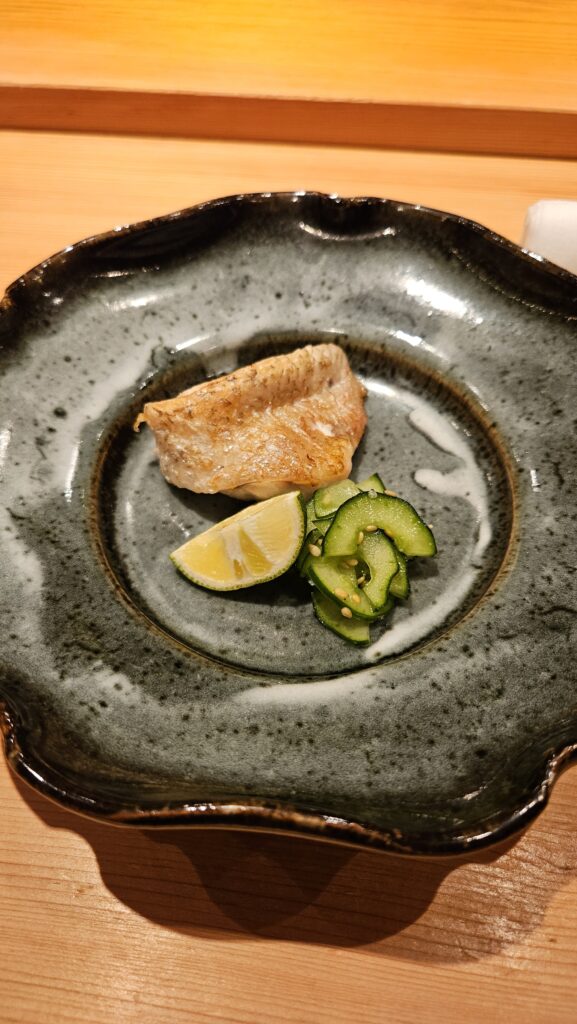
After finishing the Hana tea, I tried out the Koichiro, a green tea lineup from Royal Blue Tea. A stronger taste compared to the Hana that I took smaller sips to make it last longer.
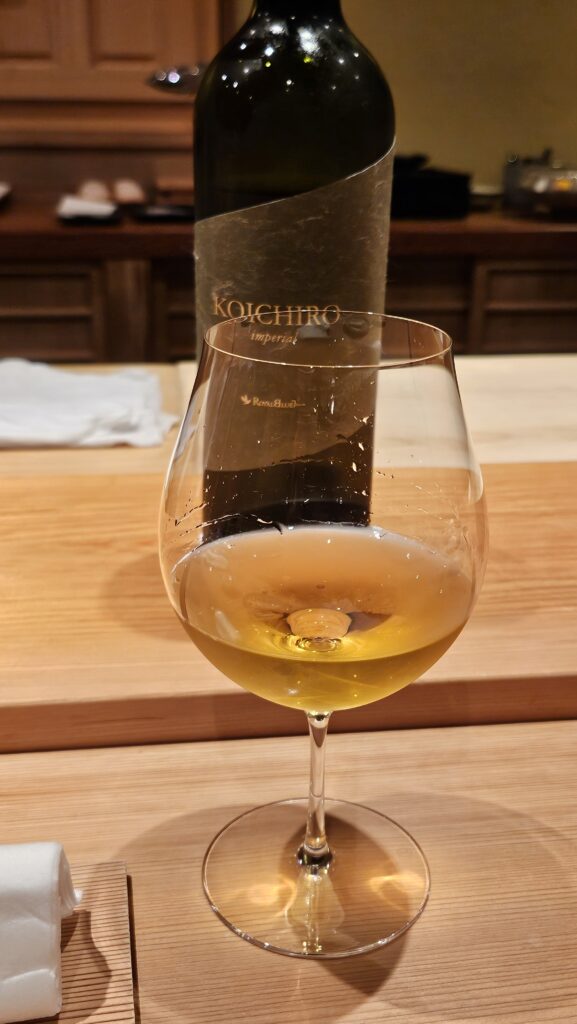
After ordering the green tea, the ankimo came, or monkfish liver. The tastiest part of the anglerfish.
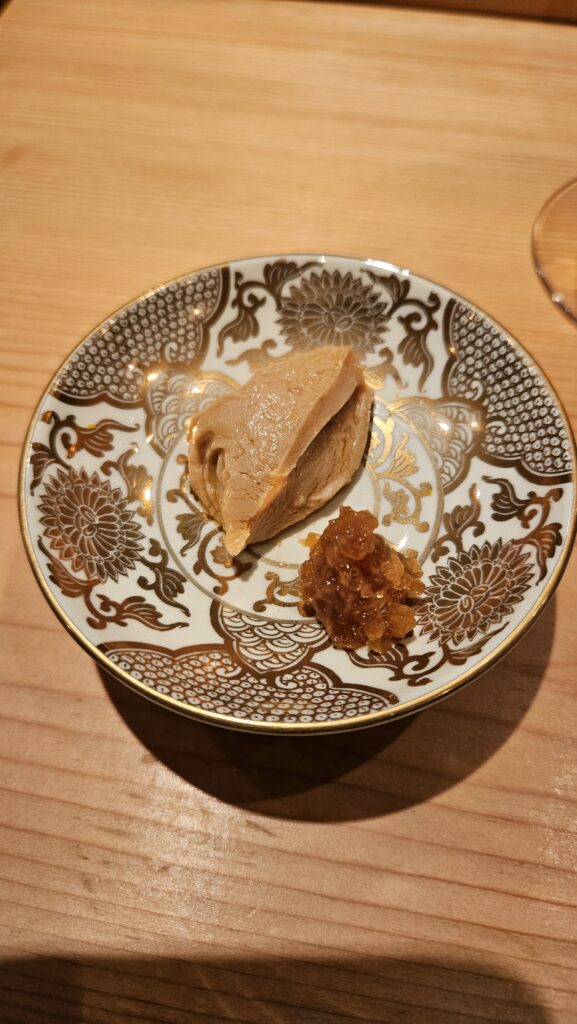
After than kimo is karasumi. Highly-priced pickled roe pouch sandwiched between daikon slices.
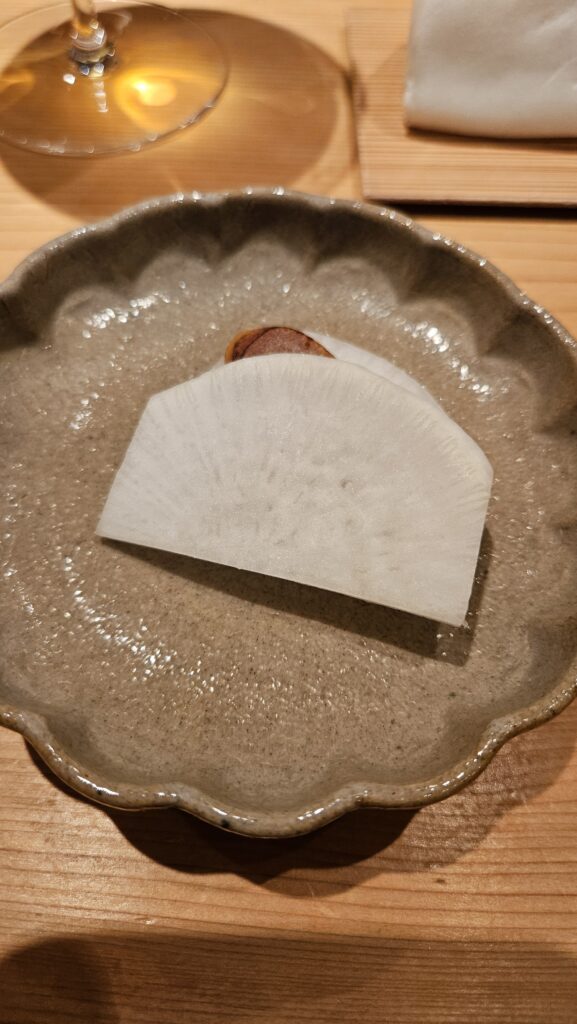
Then, the gari’s out. The ginger slices feel very high quality with nice crunches to them. Great palate cleansers, which means the nigiri finally comes out.
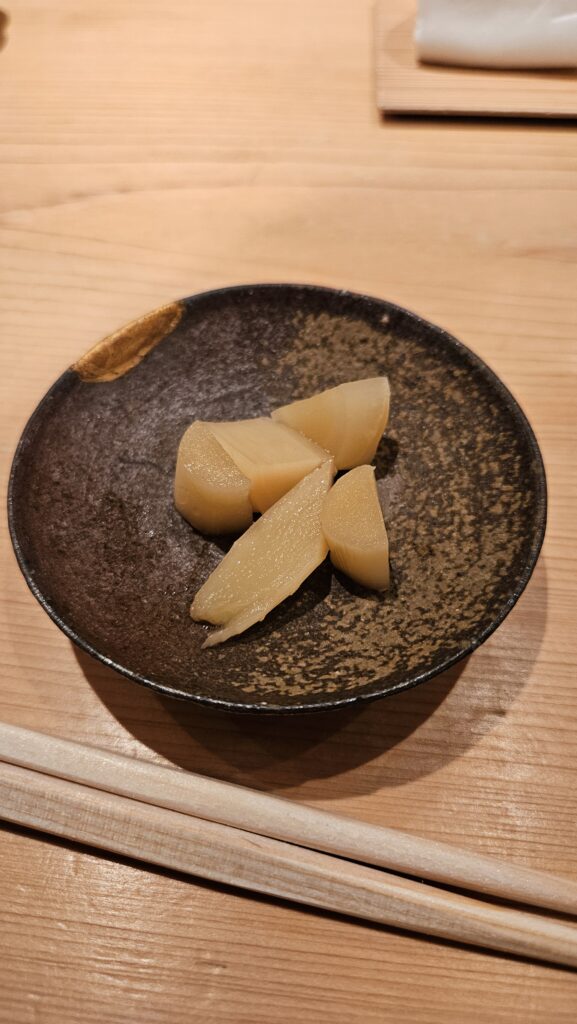
First is the hotate or scallops. The edges are cooked a bit to give it a more firm texture.
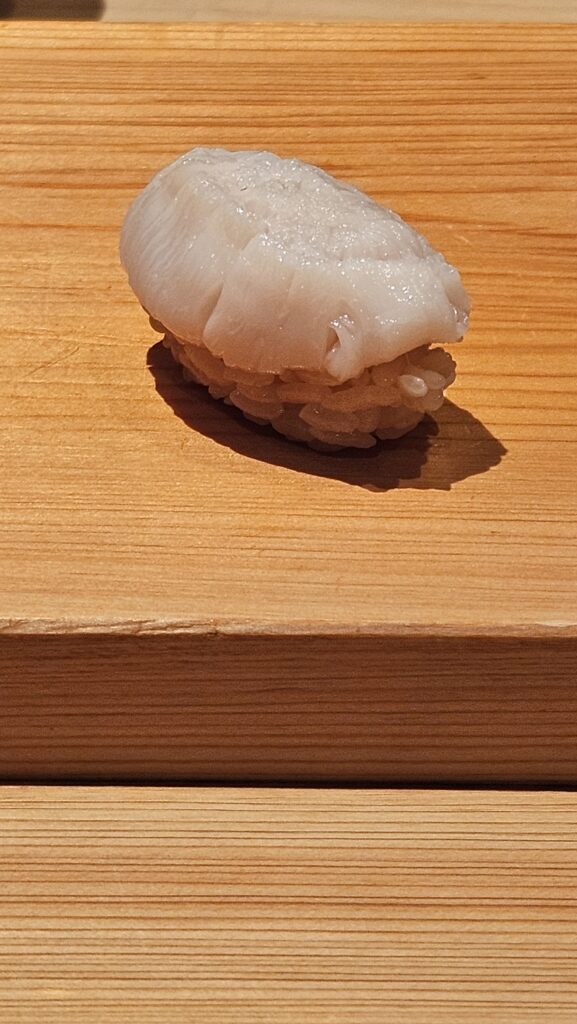
Then the Japanese cockle, another mollusk typically served in high-end sushi places.
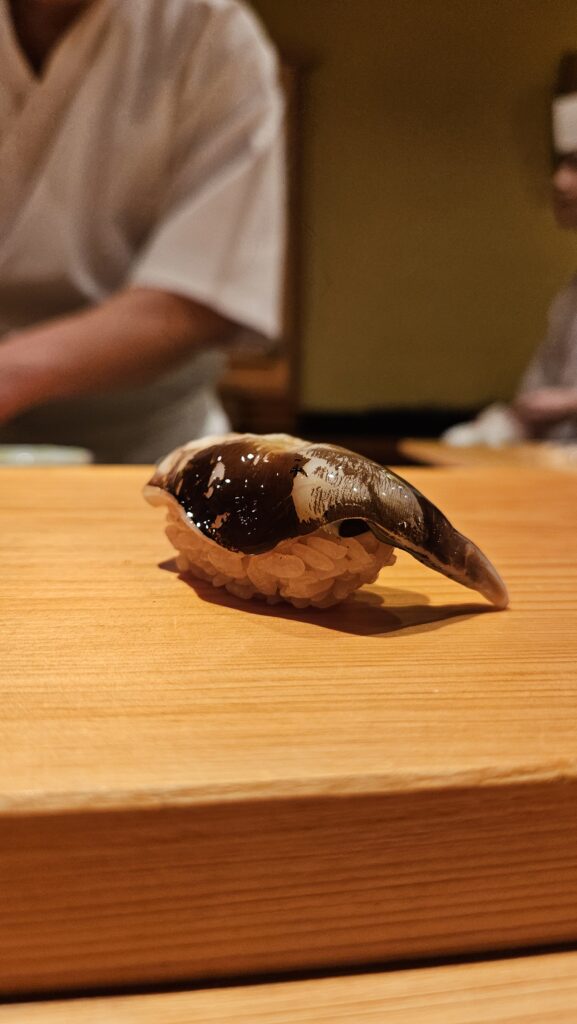
Then, the most interesting salmon I ever had. They call it “timeless salmon”, or young salmon that doesn’t sexually mature and wandered around the ocean getting fatter. That explained how easy for this salmon piece to melt in my mouth once entered. Amazing and it’s one of my highlights here!
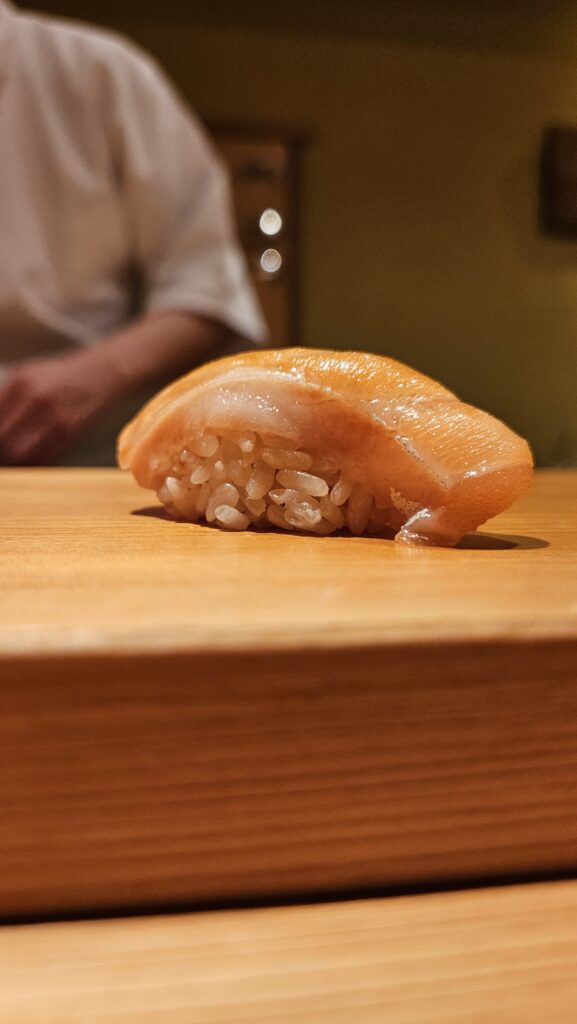
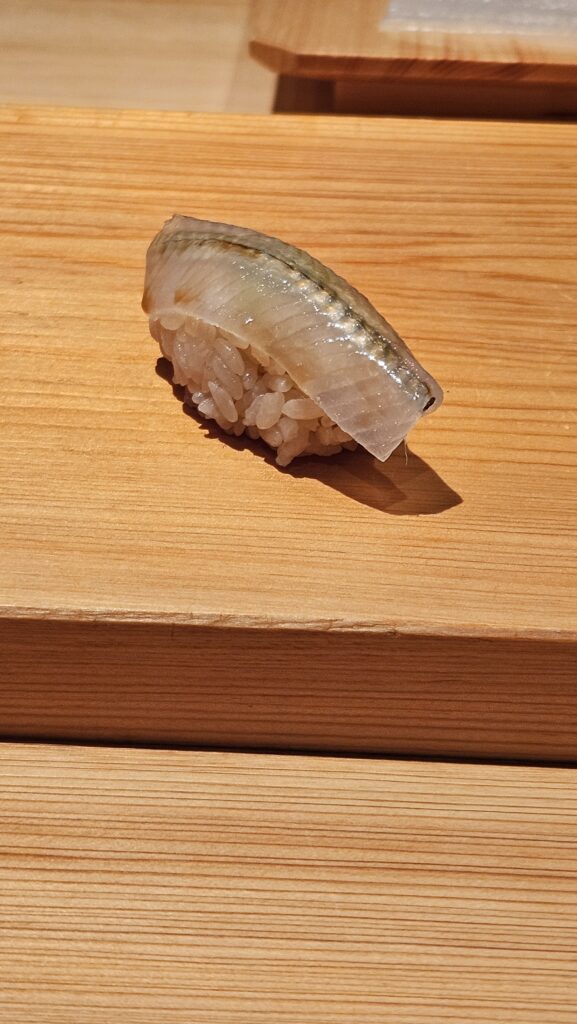
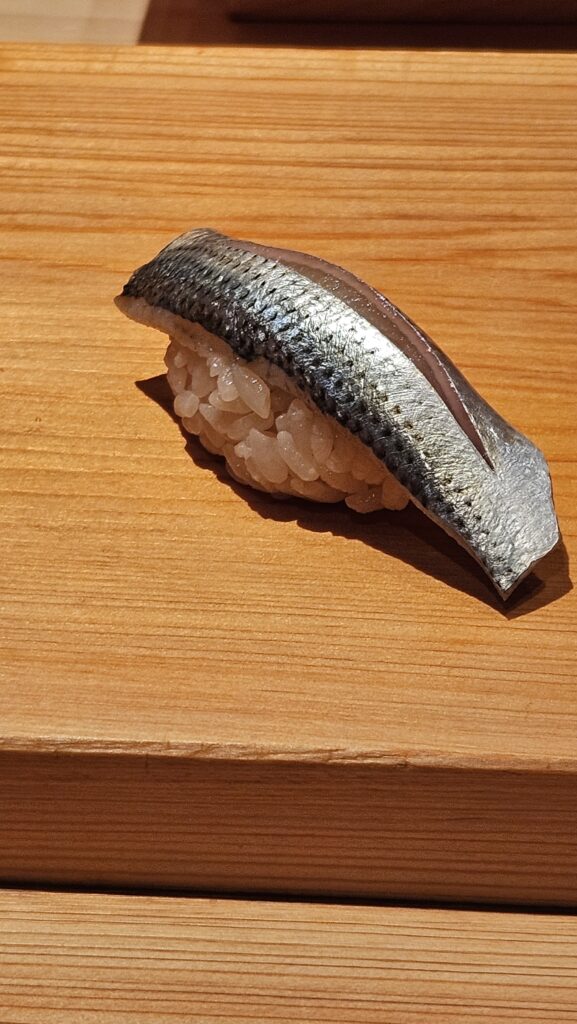
Gizzard shad is always a welcomed piece!
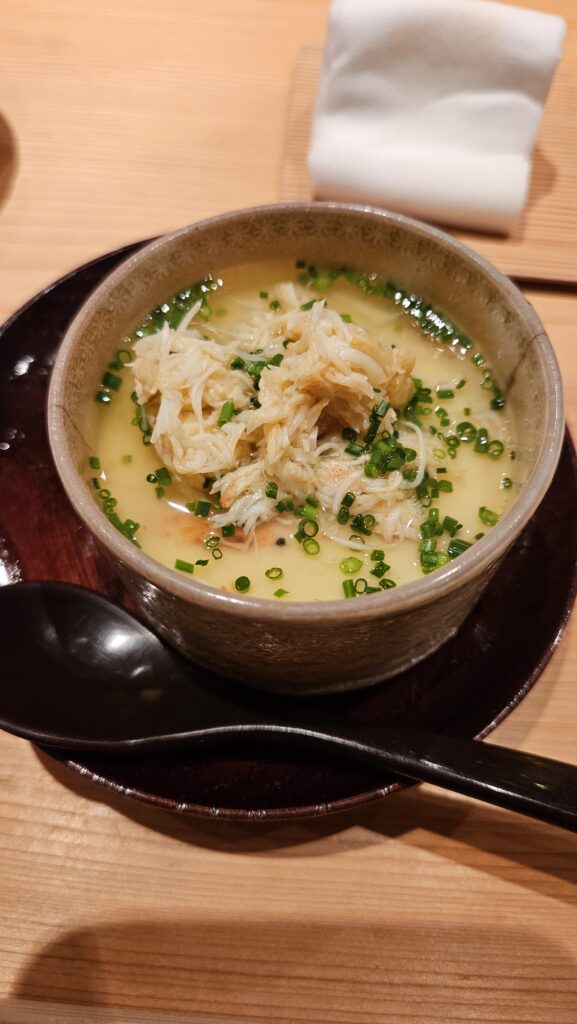
Yummy crab soup with rich broth.
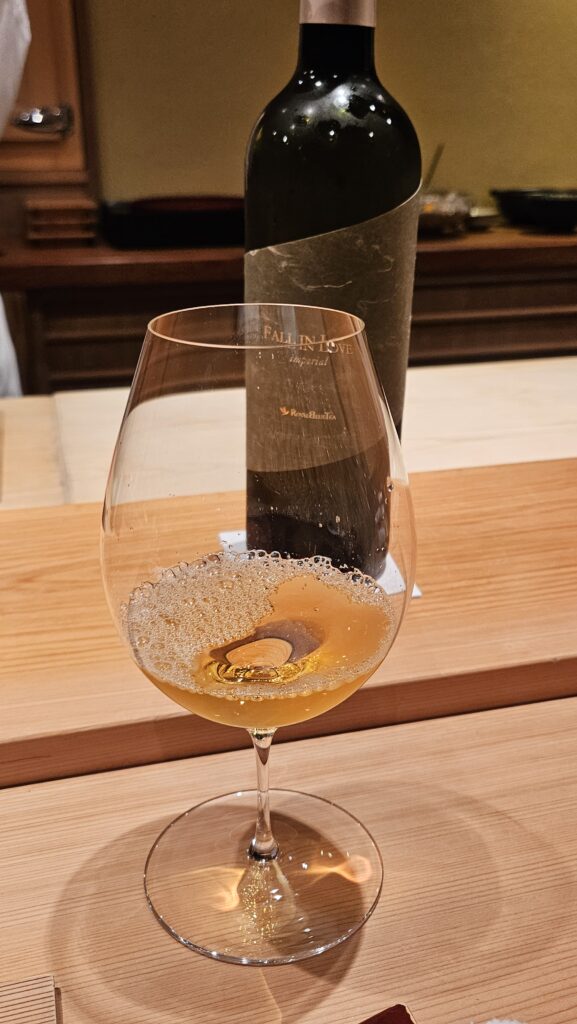
After finishing the last tea, I then tried out Fall in Love within the oolong tea lineup. The name itself gained some reactions from the lady customers next to me. The taste is more balanced and I slightly enjoyed this one more than the Queen of Blue.
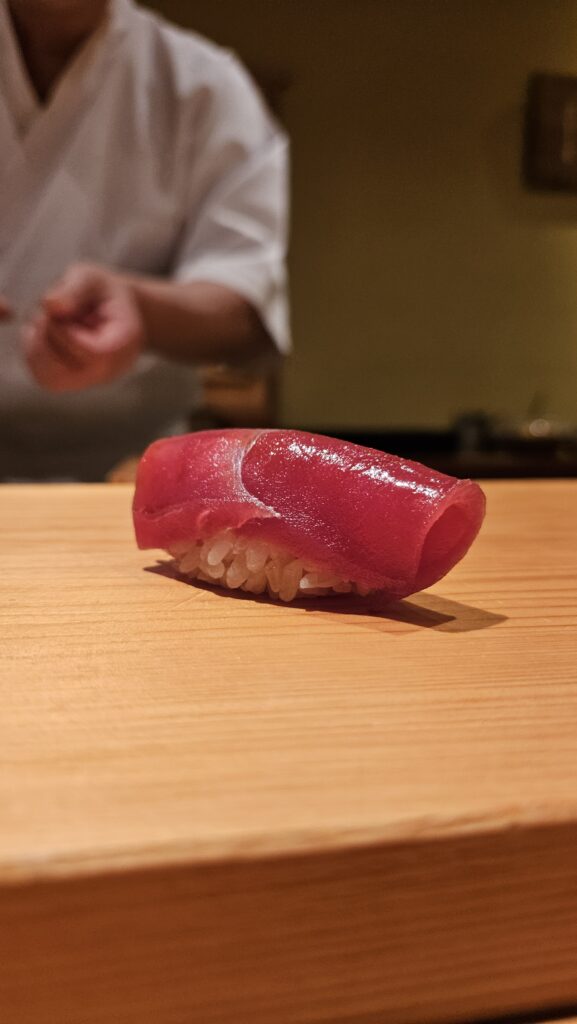
Then finally comes the tuna sets! The progress from the leanest to fattiest and signify that the dining session is coming to an end.
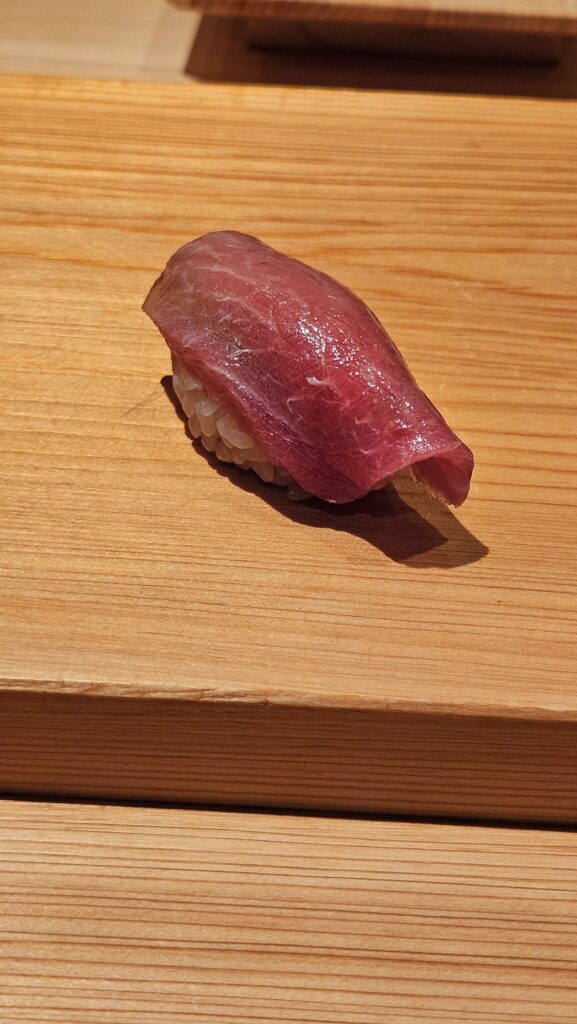
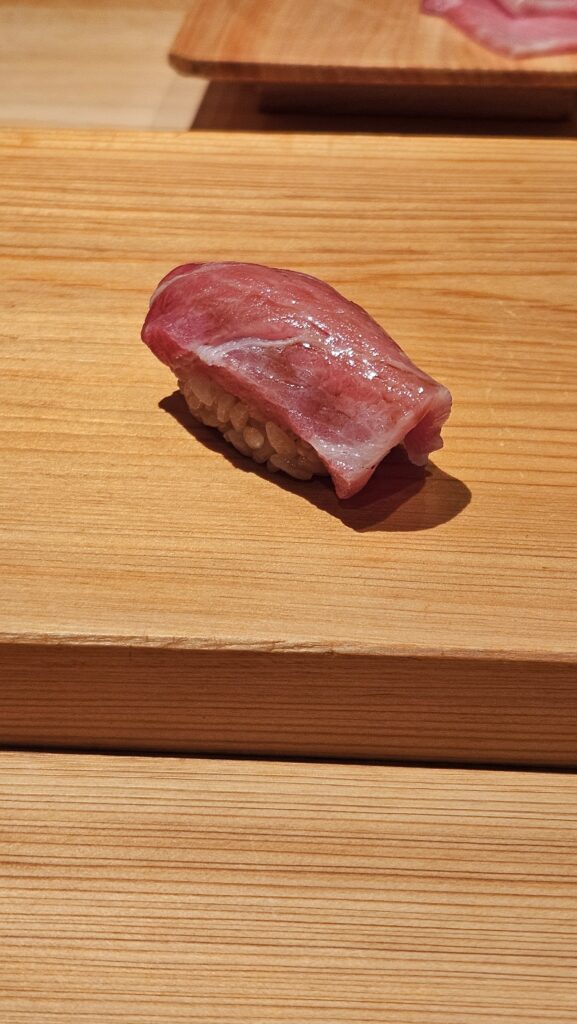
The otoro just melts in my mouth instantly. Wow!
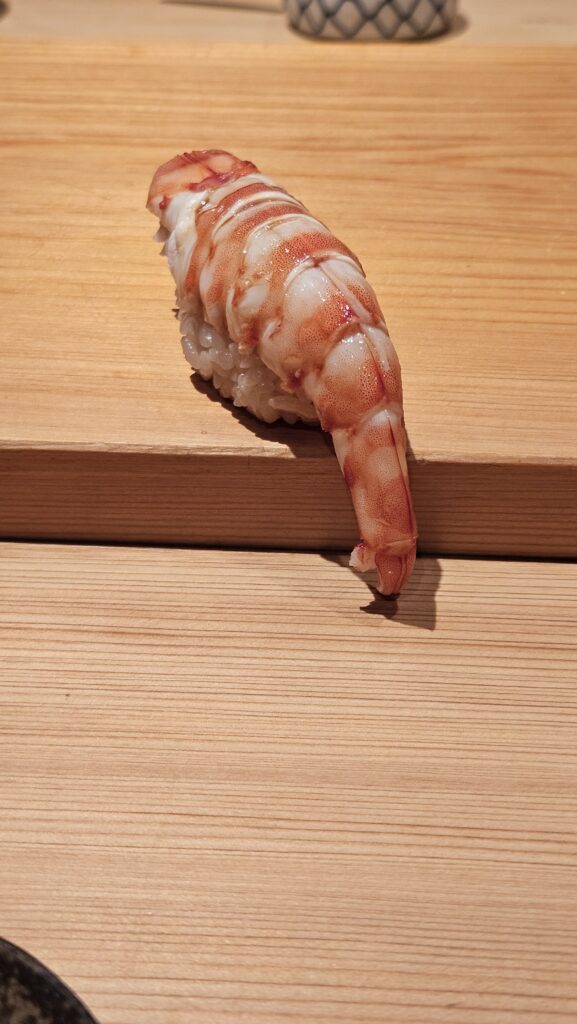
The kuruma ebi was big and I love how the tail latches on to the counter.
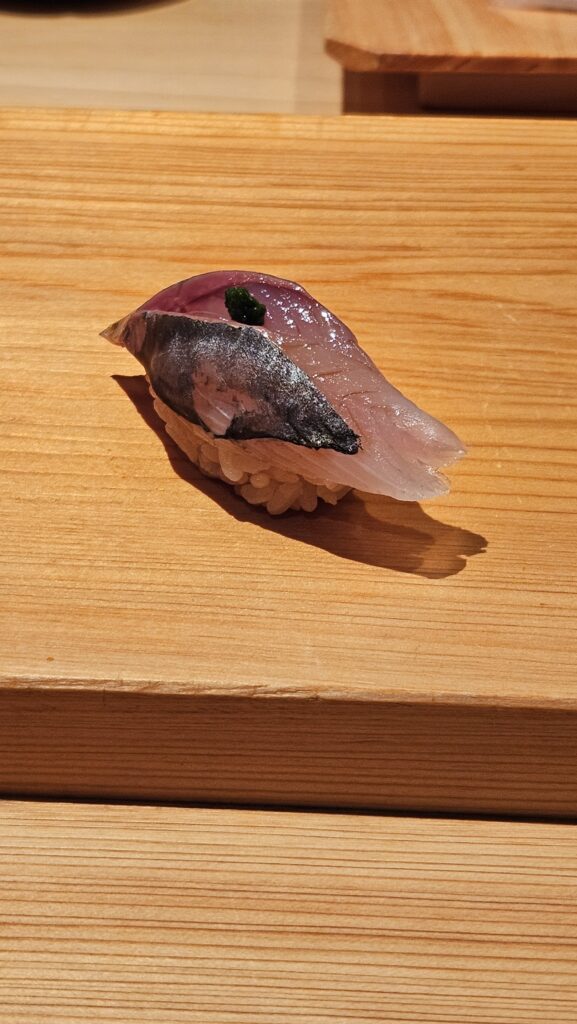
Then, horse mackerel with garnish.
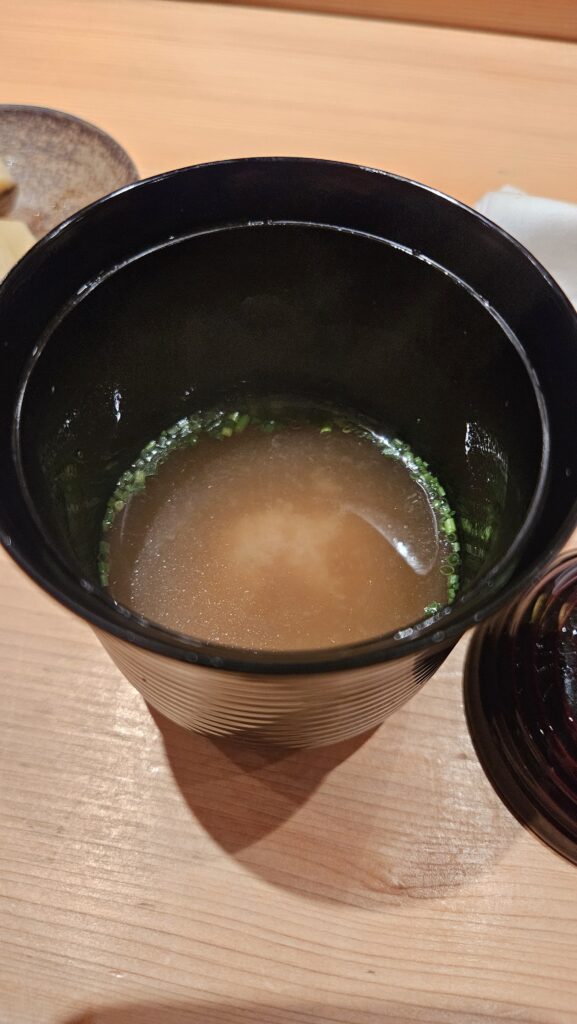
Miso soup for palate cleanser.
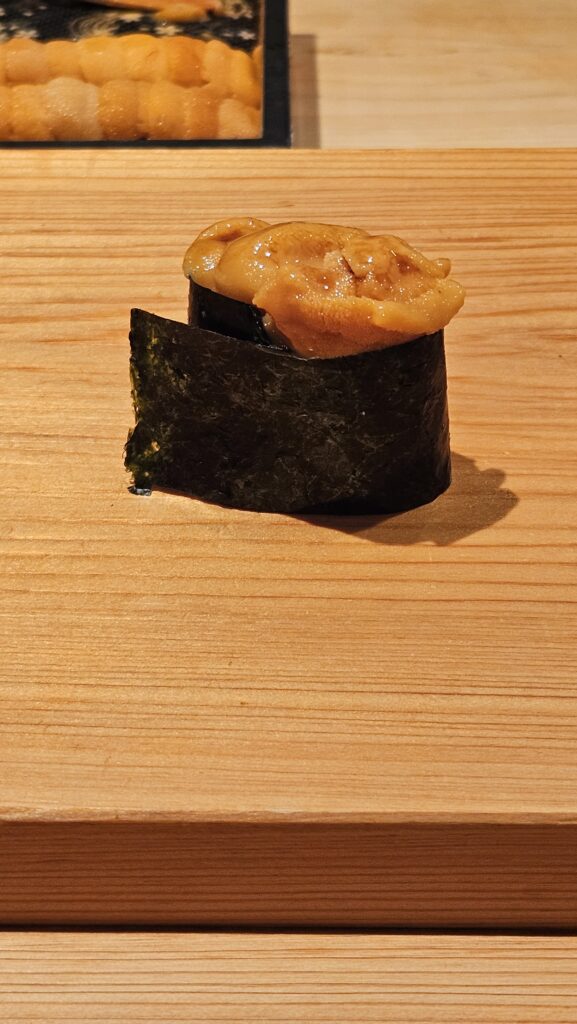
Uni gunkan-maki from Hokkaido.
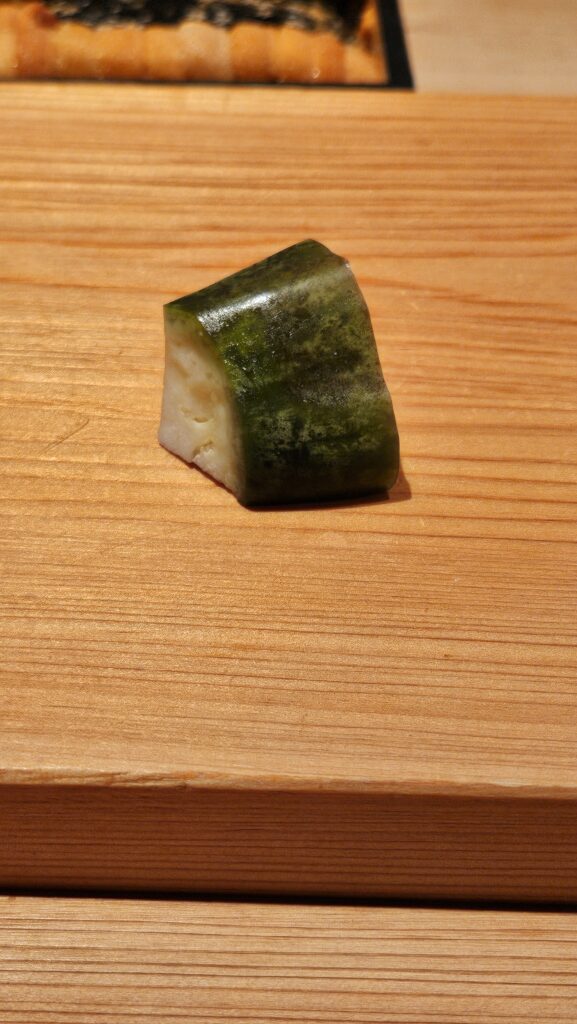
Eggplant with interesting green color.
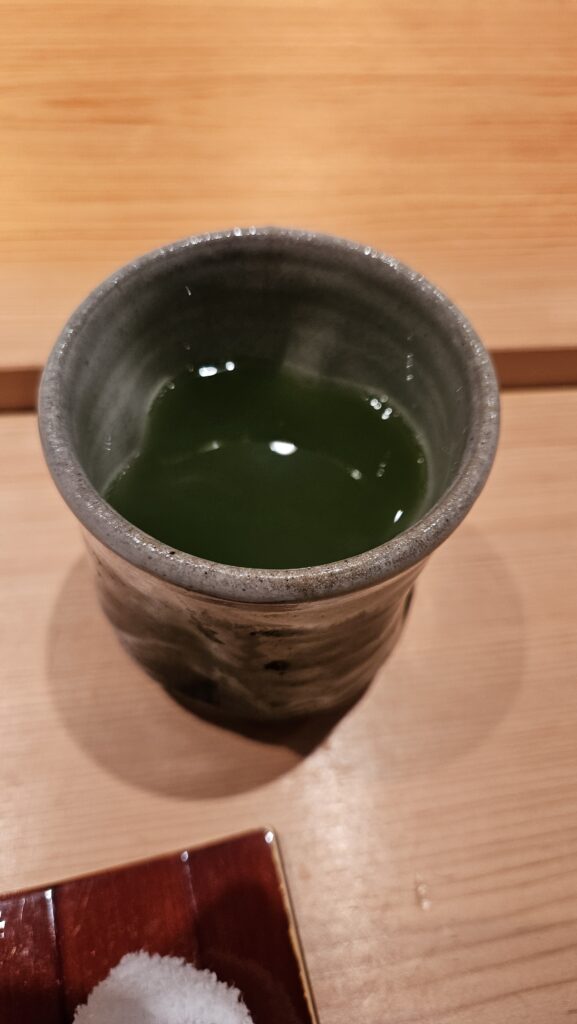
Hot green tea for another palate cleanser.
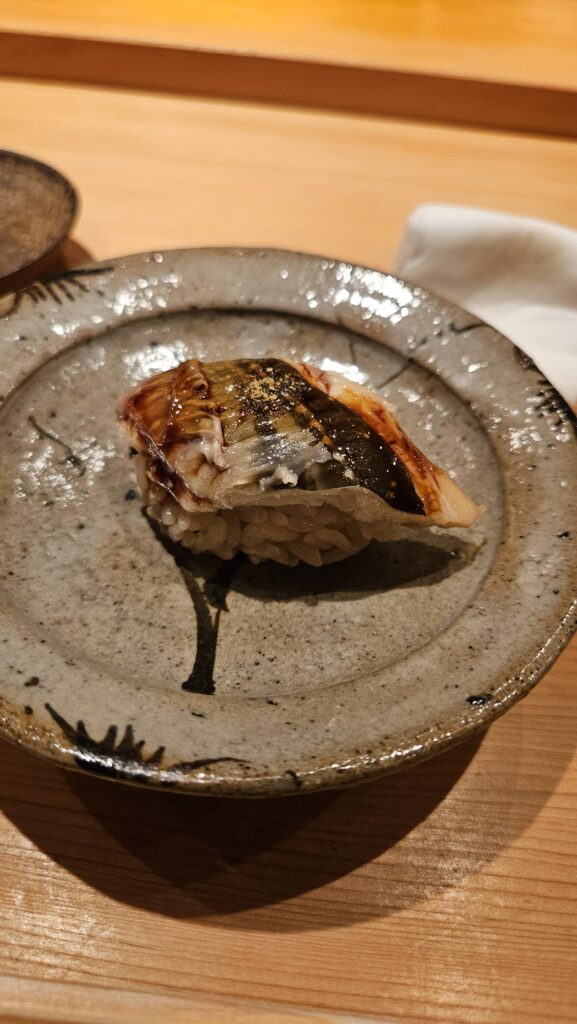
The final nigiri piece, grilled anago.
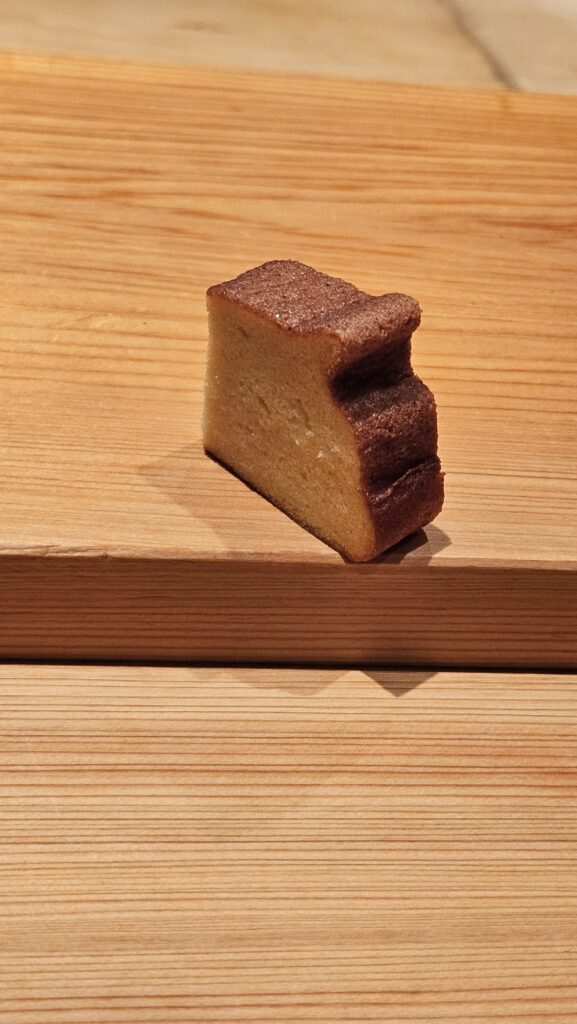
The tamago looked like a small pound cake, and just like how it looked, it tasted sweet too. Loved it!
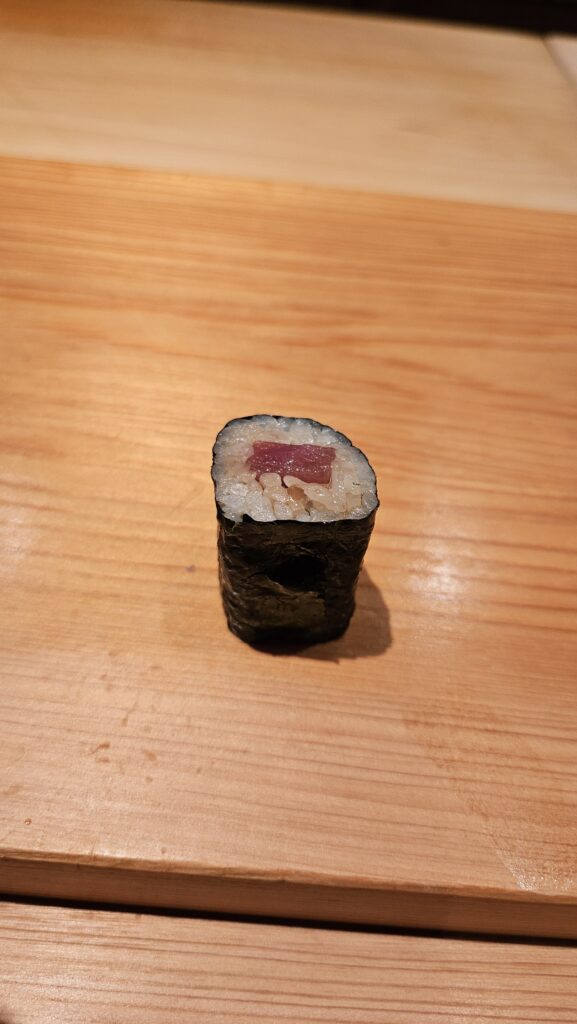
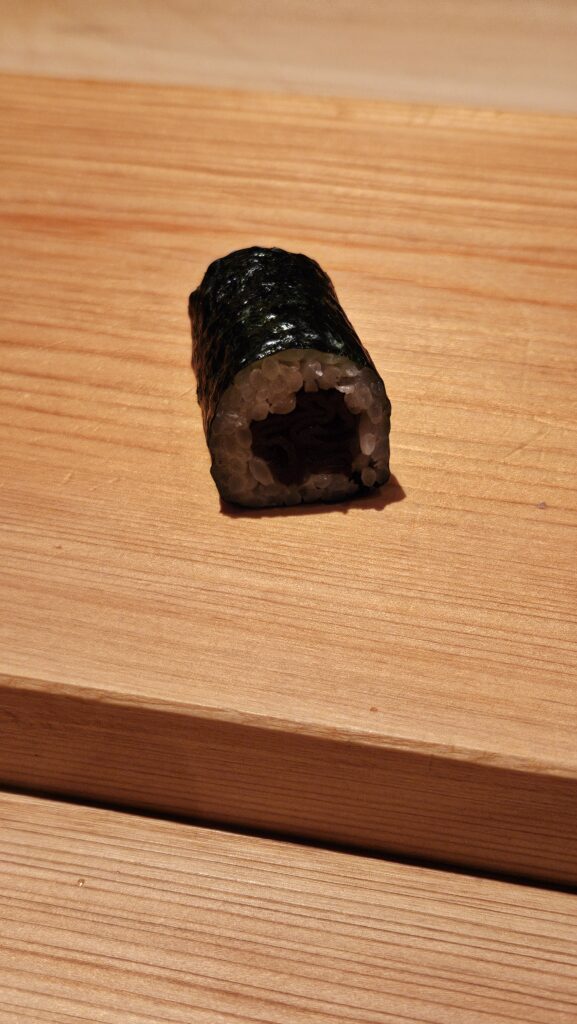
The dining session ended with the final maki rolls, tuna and dried gourd.
Conclusion
Sushi Sakai is one of the best sushi restaurants you can go to in Japan! What I love about it is how easy it is for foreigners to reserve a spot here relative to most high-end sushi places which typically require referrals or get lucky with last-minute cancellations. The price is also great compared to restaurants of the same calibre found in Tokyo.
Honestly, Sushi Sakai makes me lean towards just getting amazing sushi in Fukuoka rather than putting much more effort in getting a reservation in Tokyo which might not happen at all due to how luck-based it feels most of the time.
